New nested PCR test targets gene specific to farmed shrimp pathogen EHP
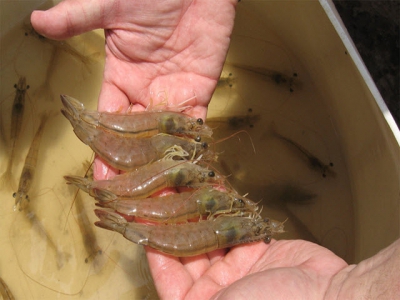
For routine diagnostics and low-grade infection detection
This study developed a nested PCR method using β-tubulin gene sequences that is specific to EHP and can be used in routine diagnostics.
The microsporidium Enterocytozoon hepatopenaei (EHP) infects penaeid shrimp and has been considered a critical threat to shrimp aquaculture, causing serious economic losses at shrimp farms in several Asian countries. The target organs include the hepatopancreas and midgut, so EHP infection can affect digestive and absorptive function, resulting in growth retardation. Shrimp could be infected with EHP by cannibalism or by feeding on EHP contaminated live feeds.
EHP diagnosis methods targeting SSU rRNA sequence
Several EHP diagnostic methods have been developed based on the small subunit (SSU) rRNA, including PCR, qPCR, in situ hybridization, and loop-mediated isothermal amplification assays. However, SSU rRNA sequences are not highly specific in discriminating microsporidia and SSU rRNA-based PCR methods may generate false positives in non-shrimp samples. For example, the EHP’s SSU rRNA sequence shared a 90 percent similarity to that of Enterospora canceri that infects marine crabs. Therefore, a more specific PCR method is needed for EHP diagnostics.
New EHP diagnosis method targeting EHP β-tubulin gene
Consequently, we developed a new EHP diagnosis method with two sets of primers designed based on the β-tubulin gene sequence (GenBank No. KX842357, Table 1).
Han, EHP detection, Table 1
| Primer name | Sequence (5' to 3') | Amplicon size (bp) |
| β-tubulin 1st-step PCR | ||
| EHP-618F | CAGCTGGTTGAAAATGCAAA | 618 |
| EHP-618R | GTGCAAAAATGCCTTTCGTT | 618 |
| β-tubulin 2nd-step (nested) PCR | ||
| EHP-237F | GATATGCGCCTCTGTGTTCA | 237 |
| EHP-237R | TGTTTGGAATCCACTCGACA | 237 |
Table 1. PCR primers used for Enterocytozoon hepatopenaei (EHP) detection.
A first-step PCR was carried out with the primers EHP-618F/R under the following cycling conditions: initial denaturation at 94 degrees-C for 3 minutes, followed by 35 cycles of 94 degrees-C for 30 seconds, 58 degrees-C for 30 seconds, and 72 degrees-C for 30 seconds, and a final extension at 72 degrees-C for 7 minutes.
Then, a second-step (nested) PCR was carried out with the internal primers EHP-237F/R under the following cycling conditions: initial denaturation at 94 degrees-C for 3 minutes, followed by 20 cycles of 94 degrees-C for 30 seconds, 58 degrees-C for 30 seconds, and 72 degrees-C for 30 seconds, and a final extension at 72 degrees-C for 7 minutes.
The second step (nested) PCR is 100-fold more sensitive than the first-step PCR (Fig. 1), and is thus suitable for detecting a low level EHP infection.

Fig. 1: Sensitivity comparison between the first-step and second-step (nested) PCR determined by a 10-fold dilution (from 10−1 to 10−5) of EHP-positive DNA at a starting concentration of 100 ng/μl.
Field samples study – first-step PCR assay
To compare the sensitivity in field samples, we applied several EHP-infected shrimp samples (n = 22) collected from Southeast Asian countries (Vietnam, India, Thailand, and Indonesia) and EHP-positive brine shrimp artemia spp. (n = 6; all at adult stage) determined by an EHP SSU rRNA PCR (PCR products correspond to accession no. KP759285) to the first-step PCR assay. After the 1st-step PCR, 618-bp amplicons were generated from all EHP samples (n = 22) from various shrimp farms in the countries named above (Fig. 2).

Fig. 2: Representative amplicons generated by the first-step PCR assays targeting β-tubulin gene. 618 bp amplicons from Indian, Vietnamese and Thai samples, but amplicons were not generated from artemia spp. samples by the first-step PCR.
The first-step PCR assay is simple and fast. However, it did not generate any amplicons from the EHP-positive artemia biomass samples (n = 6), which might be due to low quantities of EHP present in these samples (Fig. 2).
Field samples study – second-step (nested) PCR assay
After the second-step (nested) PCR, a DNA fragment of 237-bp was observed in all EHP samples (n = 22), including those from the artemia biomass samples (Fig. 3). Diagnostic results obtained by this nested PCR method are beneficial for monitoring of shrimp with low levels of EHP infection. Also, this method is helpful to detect EHP in live feed (such as artemia), which is important in the field because live feed is a potential risk for EHP infection.

Fig. 3: Representative amplicons generated by the second-step (nested) PCR assays targeting β-tubulin gene. 237 bp amplicons from EHP-positive artemia samples.
Perspectives
In this study, we developed a nested PCR method using β-tubulin gene sequences. This new PCR method is specific to EHP and can be used in routine diagnostics. Also, this method is useful to detect low-grade EHP infection. Additionally, we detected EHP in artemia samples by this nested PCR method. It suggests the possibility of EHP transfer from the live feed to shrimp broodstock. In fields, shrimp could be infected with EHP by feeding on EHP contaminated live feed such as artemia. Further laboratory experiments are required to figure out the infectivity of the EHP infected artemia in shrimp.
Có thể bạn quan tâm
Phần mềm

Phối trộn thức ăn chăn nuôi

Pha dung dịch thủy canh

Định mức cho tôm ăn

Phối trộn phân bón NPK

Xác định tỷ lệ tôm sống

Chuyển đổi đơn vị phân bón

Xác định công suất sục khí

Chuyển đổi đơn vị tôm

Tính diện tích nhà kính

Tính thể tích ao hồ


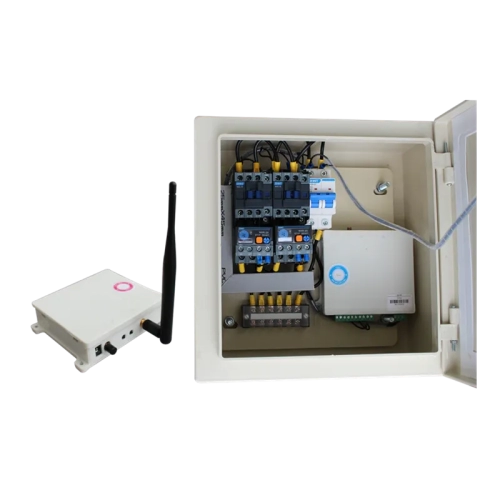

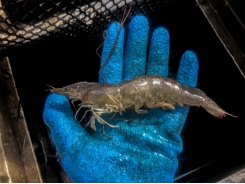
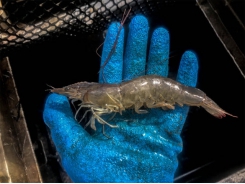
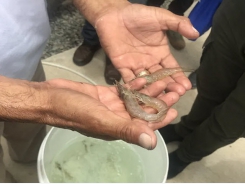



 Emerging disease: Shrimp Hemocyte Iridescent…
Emerging disease: Shrimp Hemocyte Iridescent…  Breakthrough sale for shrimp sustainability…
Breakthrough sale for shrimp sustainability…